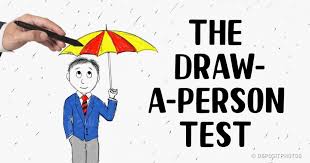Tag Archives: projective
Using Projective Tests: Psychology And Measuring Personality

Instead of being scored to a universal standard as with an objective personality test, content from projective tests is analyzed for meaning. Thematic Apperception Test (TAT) – The TAT test is also known as a picture interpretation test, used to determine personality, motivations, and problem-solving abilities. What is not contained in Cohen’s article is the possibility that no scientific harm can be caused by exposing a test that many believe to have little scientific credibility in the first place. However, to use something as subjective as this test appears to be in situations as serious as mental illness diagnosis is perhaps a little much. Creativity – Creativity tests use pictures, drawing and sentence completion to measure thought processes. Other projective tests include the Thematic Apperception Test, the Object Relations Test, and various sentence completion tests. How great would the harm be if nearly everyone on earth could get free access to all of the figures from the famous Rorschach ink blot test, along with examples of the answers that would be expected?
A recent article in the April issue of Scientific American challenges the validity of the Rorschach inkblot test, a classical psychological assessment tool, as a definitive way to diagnose mental illness. Projective techniques differ from the above in one major way. Projective tests are not infallible, but they can truly serve as a great way for therapists to learn about their patients, tat and rorschach, understand their personality traits, and determine some potential ways of helping them. Projective tests are unstructured and intentionally vague, in order to enhance the odds that the response reveal the manner in which the person perceives the world. House-Tree-Person Test – Another test for creativity, intelligence, and development in children, the subject is asked to draw a house, a tree, and a person on three different sheets of paper. Individual Style Survey – The Individual Style Survey is a reputable but broad psychometric test for how individuals respond to others and to their environments. An individual with a disorganised thought process, for instance, may have a psychotic disorder such as schizophrenia. There are many persons who have been benefitted because of this test.
Scoring errors are another potential concern. Keep these potential biases in mind as you take and study personality tests. According to the British Psychological Society, the following tips should be helpful for anyone asked to take a psychometric test. Projective tests take place when the individual is given an image to look at. Career Values Scale – The Career Values Scale is commonly used in career testing to determine personal values of an individual that might influence his or her career choices and levels of satisfaction in certain jobs. Neuropsychological – Neuropsychological testing includes clinical testing for an individual’s perceptions, sensory functions, cognitive functions, and motor functions. Projective tests are use to give insight into an individual’s personality. Although the plates are long out of copyright in the US, the outcry from some psychologists has been fervent. The Scientific American article points out that the Rorschach test (along with the similar TAT assessment) has both a low scoring validity and low reliability.
Scoring validity errors often come from the subjective assessments of the professionals who administer the test. Scott Lilienfeld, an associate professor of psychology at Emory University and co-author of the 2003 book “What’s Wrong with the Rorschach?” is one of many psychologists who doubts the validity of the test. The Rorschach Test in Clinical Diagnosis: A Critical Review. The furor over Wikipedia’s posting of the Rorschach blots obscures a far more important issue. Therefore, projective tests are one of the way where in which all the personality change and reaction over situation counted the most. This process was originally completed in two sessions over two days, each lasting about an hour. Two are black and red ink on white. Test developers can minimize this bias by dropping questions that are likely to evoke it. The CPI is designed to test the personality traits of “normal” individuals. California Psychological Inventory (CPI) – The CPI is very similar to the MMPI but is made up of 240 questions in addition to the MMPI’s 194 questions.
